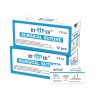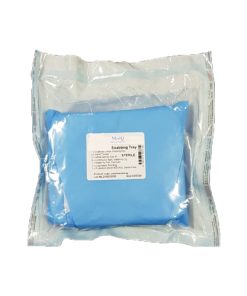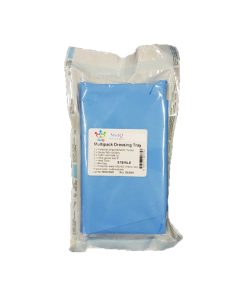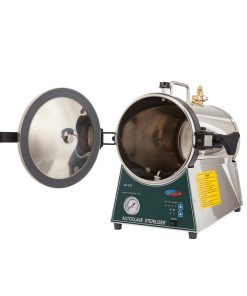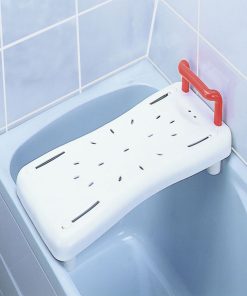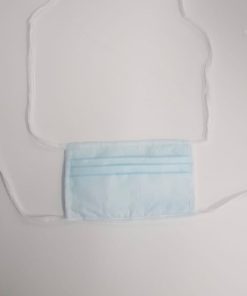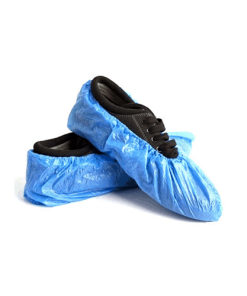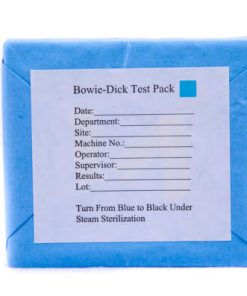vicryl 1
R486.36 Original price was: R486.36.R85.50Current price is: R85.50. Ex VAT
| Product Description | Size/USP | Thread length/cm | Needle specification |
| Nylon | 2/0 | 45 | 3/8▲25mm |
Sutures are medical devices used to hold body tissues together after surgery or injury. They help in wound closure, aid in the healing process, and minimize the risk of infection. Sutures can be categorized based on their material, structure, and absorbability. Below are the main types of sutures and their common uses:
1. Absorbable Sutures
Absorbable sutures are designed to break down and be absorbed by the body over time, eliminating the need for removal. They are typically used for internal tissues.
Types:
- Polyglycolic Acid (PGA) or Vicryl: Braided synthetic absorbable suture commonly used in soft tissue closures, such as subcutaneous layers, and internal surgeries.
- Poliglecaprone (Monocryl): Monofilament synthetic absorbable suture often used in general surgeries and for closing the skin, especially in areas with less tension.
- Polydioxanone (PDS): Monofilament synthetic absorbable suture used for slow-healing tissues like tendons and fascia.
- Catgut (Plain or Chromic): Derived from animal intestines, these natural absorbable sutures are used in internal tissues like mucosal areas but are now less common due to synthetic alternatives.
Uses:
- Internal tissue closures (e.g., subcutaneous layers, organ repair)
- Obstetric and gynecological procedures
- Pediatric surgeries (to avoid suture removal in children)
- Oral surgeries (e.g., gum or dental procedures)
2. Non-Absorbable Sutures
Non-absorbable sutures remain intact in the body unless removed. They are used for external wound closure or situations where long-term strength is needed.
Types:
- Nylon (Ethilon, Dermalon): Monofilament or braided non-absorbable suture used for skin closure and wound repair.
- Polypropylene (Prolene): Monofilament non-absorbable suture known for its flexibility and strength, commonly used in cardiovascular surgeries and for closing fascia and tendons.
- Silk: Braided natural non-absorbable suture, often used in securing surgical drains or closing skin. It is no longer widely used for deep tissues due to its reactivity.
- Polyester (Ethibond): Braided non-absorbable suture often used in cardiovascular, ophthalmic, and orthopedic surgeries.
Uses:
- Skin wound closures
- Orthopedic surgeries (e.g., tendons, ligaments)
- Cardiovascular surgeries (e.g., heart valve repairs)
- Ophthalmic surgeries (eye surgeries)
- Securing surgical drains
3. Monofilament vs. Braided Sutures
- Monofilament Sutures: Made of a single strand of material, they tend to have a smoother surface, which passes through tissues easily and minimizes infection risk but may be more prone to breaking.
- Uses: Ideal for skin closures and procedures where reduced tissue drag and infection risk are essential (e.g., vascular surgeries).
- Braided Sutures: Composed of multiple intertwined fibers, providing better knot security but may harbor bacteria and cause more tissue drag.
- Uses: Commonly used in deep tissue closures, where strength and knot security are required (e.g., tendon repairs, gastrointestinal surgeries).
4. Synthetic vs. Natural Sutures
- Synthetic Sutures: Made from man-made materials (e.g., Nylon, Polypropylene, Polyglycolic Acid), they are generally less reactive in the body and more predictable in terms of absorbability.
- Uses: Widely used in both absorbable and non-absorbable applications across various surgical fields due to their consistent performance and low tissue reactivity.
- Natural Sutures: Made from natural materials like silk or gut, these sutures tend to be more reactive in the body.
- Uses: Traditionally used in certain types of surgery but now replaced by synthetic alternatives for many applications.
5. Barbed Sutures
Barbed sutures are newer sutures that have barbs along their length to grip tissue without the need for knots. They are often used in laparoscopic surgeries and plastic surgery.
Uses:
- Cosmetic surgeries (e.g., facelifts, breast surgeries)
- Laparoscopic procedures
- Wound closures in areas under tension
6. Antibacterial Sutures
Some sutures are coated with antimicrobial agents to reduce the risk of infection, especially in areas prone to infection or in patients at higher risk of wound infection.
Uses:
- Wound closures in high-risk infection areas (e.g., abdomen, joints)
- Patients with compromised immune systems
- Surgeries involving gastrointestinal or urinary tracts
7. Specialty Sutures
- Staples and Adhesives: Not exactly sutures, but staples and adhesives are used in some cases where rapid wound closure is needed (e.g., trauma, emergency surgeries).
- Retention Sutures: Used in areas under high tension to prevent the wound from reopening, especially in large incisions (e.g., abdominal surgeries).
Uses:
- High-tension wound closures
- Emergency or trauma situations
- Large incisions where additional support is needed
Key Considerations in Choosing Sutures:
- Tissue Type: Different tissues require sutures with varying strength, flexibility, and absorbability (e.g., fast-absorbing sutures for internal mucosal layers, strong non-absorbable sutures for tendons).
- Tension and Healing Time: Wounds under tension may need non-absorbable or slow-absorbing sutures. Rapidly healing tissues may use absorbable sutures.
- Infection Risk: Monofilament or antimicrobial-coated sutures are ideal for minimizing infection risks in certain surgeries.
Understanding the various types of sutures and their specific uses allows for appropriate suture selection based on the type of surgery, wound healing requirements, and patient conditions.
At MedQ, we extend a warm invitation to explore our exceptional range of hospital gloves and critical medical supplies. Our expertise lies in providing a diverse array of hospital gloves thoughtfully designed to address the unique requirements of healthcare professionals and healthcare facilities. Our steadfast commitment to upholding excellence and safety ensures that our gloves consistently deliver superior quality, with a strong emphasis on protecting both medical practitioners and patients.
Related products
Misc




